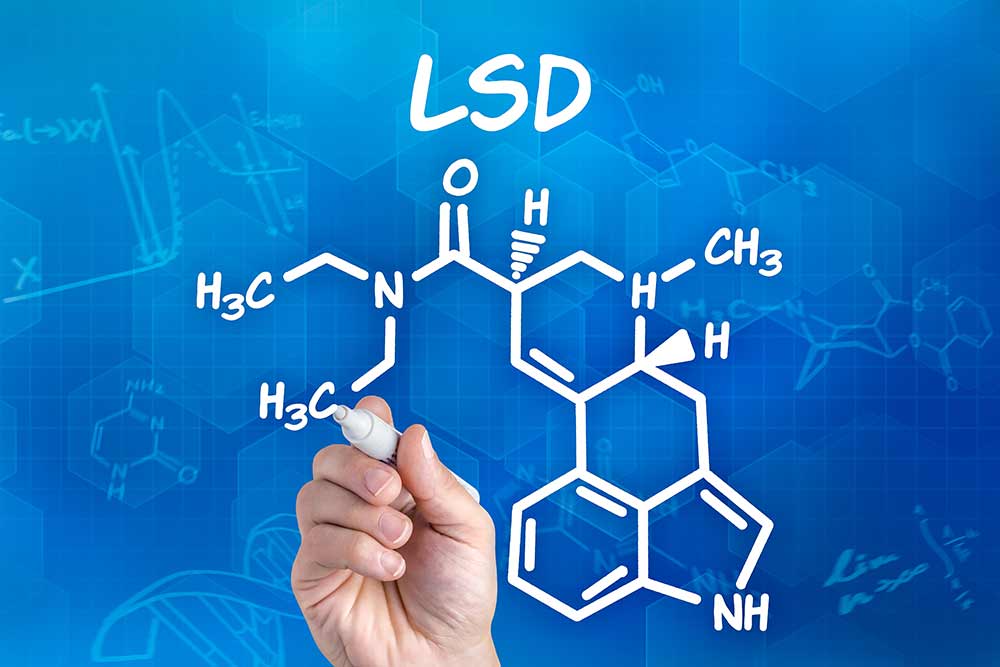Read the latest and greatest from our team
of incredible specialists.

Beach House Recovery Center » Blog » LSD Addiction, Side Effects, and Recovery Support
If you’re feeling lost in LSD use, let this be your turning point. At Beach House Center for Recovery, you’ll find more than just treatment. You’ll find a compassionate team that believes in you and is committed to helping you heal, grow, and reclaim your life.
Take the first step. Call us today. We’ll walk with you every step of the way.

Lysergic acid diethylamide, most commonly known as LSD, is a strong, man-made hallucinogen that alters a person’s perception, thoughts, feelings, and situational awareness.
LSD is usually taken orally (e.g., patches, tablets, capsules, liquid, etc.) and goes by many street names, such as:
LSD is illegal in the United States and all U.S.-owned territories.
It is classified as a Schedule I controlled substance, meaning it currently has no accepted medical use and a high potential for abuse.
LSD is known as a mind-altering drug that affects the action of a brain chemical called serotonin. Serotonin helps control mood, behavior, and thinking.
LSD health effects can also include hallucinations or “trips” that can last several hours, even after the substance has been cleared from the bloodstream. Other psychological symptoms of LSD use may include:
Short-term physical health effects of LSD may include:
More severe but less common LSD side effects may include:
Short-term side effects are extremely common with LSD use.
Individuals with pre-existing mental health conditions or a history of LSD use have a higher risk of experiencing more severe, long-term health effects.
Mental Health Risks of LSD
If you or a loved one is experiencing long-term health effects of LSD use or are ready to quit, talk to a skilled addiction specialist at Beach House Center for Recovery. We are here to help you overcome your addiction and reclaim a healthier, happier life in sobriety.
Yes, it is possible to overdose on LSD. While LSD is not considered physically addictive (it doesn’t cause compulsive drug-seeking behavior), it is psychologically additive and is potentially dangerous, especially in large amounts.
High doses of LSD can lead to serious mental and physical health complications.
LSD users are at an increased risk for developing long-term psychosis, including symptoms of schizophrenia or severe depression, which can deeply affect thoughts, emotions, and behavior.
LSD overdose symptoms may include:
If you believe someone is experiencing an LSD overdose, call 9-1-1 or go to your nearest emergency room immediately.
Over time, individuals may find themselves relying on the drug to escape reality or cope with emotional distress. This can lead to LSD abuse symptoms and behavioral red flags, including:
Beach House Center for Recovery offers several specialized treatment programs to help individuals overcome LSD addiction. They include:
At Beach House Center for Recovery, you can expect personalized, patient-first care from your very first phone call. From medical detox to specialized therapies and aftercare support, every part of your experience is designed with your long-term healing in mind.
Talk to one of our treatment specialists today and get started on your path to overcoming the negative health effects of LSD. We are dedicated to providing a safe, supportive environment that meets your unique needs.
Yes, LSD can cause lasting psychological effects. While rare, conditions like hallucinogen persisting perception disorder (HPPD) can severely impact daily functioning and may not fully resolve, even after stopping LSD use.
LSD side effects typically last 8-12 hours, but some psychological symptoms (e.g., anxiety, depression, and confusion) can linger for several days.
In rare cases, long-term effects like hallucinations, flashbacks, or HPPD may persist for weeks, months, or even years.
LSD is unpredictable and can trigger hallucinations and panic attacks. High doses may also lead to risky behavior, accidents, or even mental breakdowns.
For those with pre-existing mental health conditions, LSD can make symptoms worse or trigger more severe conditions, like schizophrenia or severe depression.
Whether you’re researching for yourself or a loved one, Beach House can help. We understand that this is a serious time in your life and that the treatment center you choose matters. We want you to feel comfortable and empowered to make the right decision for yourself, a friend, or a family member. This is why a counselor is waiting and available to answer your questions and help put your mind at ease regarding the next steps. Many of the staff at Beach House have walked in your shoes. If you feel you’re ready or want more information about how to help a loved one, we can help today. You can also learn why we are voted the #1 rehab for addiction treatment in Florida.





"*" indicates required fields